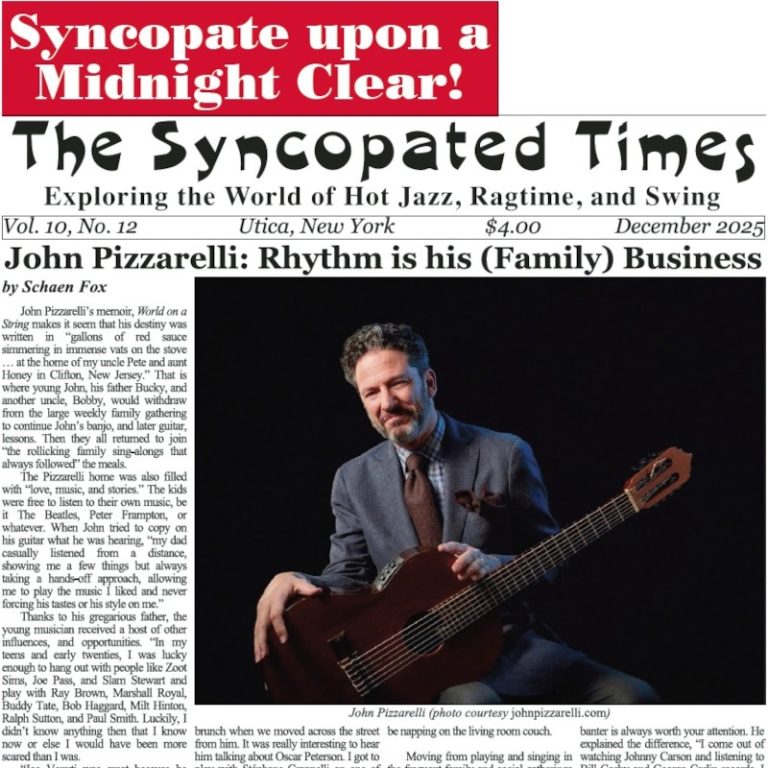The “ragtime revival” started with Wally Rose’s surprise hit recording, in December 1941, of George Botsford’s “Black And White Rag.” At that time, there was little ragtime sheet music on the commercial market, there were no ragtime societies, festivals or concerts, and any rags played professionally were tossed in as throwaways by pianists in local taverns.
For some years thereafter, ragtime was supported by a small handful of pianists who occasionally got some radio play for their recordings, or, like Bob Darch, traveled a barroom circuit. The list consisted, pretty much, of Rose, Darch, Joe “Fingers” Carr (Lou Busch), and Johnny Maddox.
Then along came Max Morath. Max had been playing ragtime in his native Colorado when he decided that he wanted to play ragtime as a full-time profession. He told me that, at that time, he realized that, if he was going to do so, he needed to find a way to make a living out of ragtime that would be more lucrative and dependable than local saloon gigs.
Gifted with an excellent business sense and a thorough grasp of showmanship, Max brought ragtime to the general public in a less casual manner than his contemporaries. His two NET TV series, The Ragtime Era and The Turn Of The Century, not only reached a broader audience for ragtime than anything else up to that time, but also put ragtime in its proper perspective as a worthwhile and
You've read three articles this month! That makes you one of a rare breed, the true jazz fan!
The Syncopated Times is a monthly publication covering traditional jazz, ragtime and swing. We have the best historic content anywhere, and are the only American publication covering artists and bands currently playing Hot Jazz, Vintage Swing, or Ragtime. Our writers are legends themselves, paid to bring you the best coverage possible. Advertising will never be enough to keep these stories coming, we need your SUBSCRIPTION. Get unlimited access for $30 a year or $50 for two.
Not ready to pay for jazz yet? Register a Free Account for two weeks of unlimited access without nags or pop ups.
Already Registered? Log In
If you shouldn't be seeing this because you already logged in try refreshing the page.




